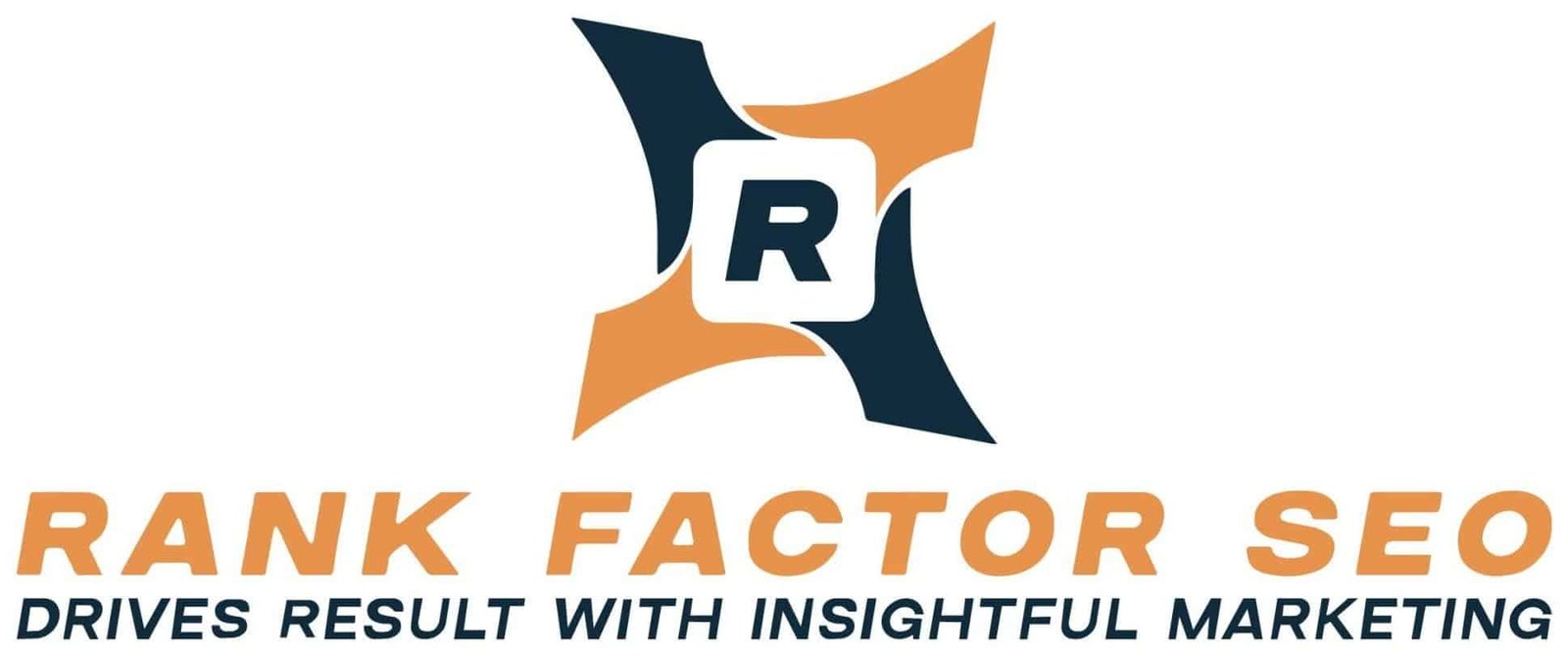High Yield Google Ads

Successful ads are no longer just about catchy copy; they demand a mastery of various performance factors to excel in Google Ads.
These days, where Google’s advanced serving mechanisms prioritize quality over bid amounts, winning requires a certain amount of finesse, the more the better.
Here’s where I’ve delved into the intricacies of crafting high-yield ads …that not only secure top positions but also deliver optimal returns on investment.
If you know me, you’ll know I am all about creating value for my clients, for that reason, I only work with a handful of clients so that I can bring a laser focus on high-yield ads.
In doing so, I focus on Search Engine Optimization for web dominance & maximizing online revenue potential. I seek to leverage Rank Factor Performance and SEO to supercharge my client’s brand marketing, lead generation, sales, and other marketing goals and objectives.
What Goes Behind Successful Google Ads?
To achieve profitable outcomes, we must grasp the multifaceted elements that contribute to Google Ads’ success, so in my comprehensive guide I’m going through the topics below
User Experience and Mobile Performance
The responsiveness and user-friendliness of landing pages significantly impact ad performance.
Ads Relevancy
Ensuring alignment between ad content and landing page offerings that enhances relevance and boosts performance metrics.
Optimizing Bidding Strategies
Selecting the right bidding tactics is crucial for maximizing ad visibility and ROI.
Keyword Optimization
From broad match to negative keywords, mastering keyword types is essential for targeting the right audience.
Audience Targeting
Tailoring ads to specific demographics and interests improves engagement and conversion rates.
Analytics and Data Utilization
Leveraging data insights enables continuous refinement and optimization of ad campaigns.
Competitive Analysis
Monitoring competitor ads provides valuable insights for refining ad strategies and gaining a competitive edge.
Dynamic Ad Assets
Using dynamic ad elements enhances personalization and relevance - driving better results.
Conversion Tracking and Optimization
Implementing robust conversion tracking mechanisms enables the fine-tuning of landing pages for maximum conversions
A/B Testing
Experimenting with different landing page variations helps identify optimal designs and messaging.
Location and Demographic Targeting
Adjusting ad parameters based on location and demographic data optimizes ad budget allocation and performance metrics.
I’ve found that mastering these components, and adopting a data-driven approach, means that advertisers like you can elevate your Google Ads game, standing out as an authority in the arena of digital advertising.
If that sounds good, then read on, because this is my value-added crash course just for you.
Let’s begin with a subject we’re all familiar with – user experience, coupled with mobile performance!
User Experience and Mobile Performance
For digital advertising, user experience (as they say) reigns supreme. Google will prioritize websites with excellent mobile performance and user-friendly interfaces.
So, a responsive landing page that adapts seamlessly to various devices not only enhances user experience but also improves ad performance.
Many have already heard that more than 50% of web traffic comes from mobile, and Statista agrees, stating that In the last quarter of 2023, mobile devices (excluding tablets) generated 58.67 percent of global website traffic.
This highlights the importance of mobile-friendly landing pages.
Also, load speed is critical; a delay of just a few seconds can lead to a significant drop in user engagement and conversions.
Therefore, optimizing page speed and ensuring a smooth browsing experience across all devices is imperative for successful Google Ads campaigns. You might be surprised by the difference this can make.
There’s no escaping that the world today is mobile-centric, so optimizing user experience is important for Google Ads’ success.
And here are some more statistics to back this up.
ThinkwithGoogle also gives us a breakdown of traffic lost through bounce rates and you’ll see how significant this can be for your traffic figures.
Load Speed (Seconds) | Bounce Rate Increase |
|---|---|
1-3 Seconds |
32% Probability |
1-5 Seconds |
90% Probability |
1-6 Seconds |
106% Probability |
1-10 Seconds |
123% Probability |
So, what can we do? Well…
Running a technical audit on a page can reveal the issues with web core vitals such as inefficient use of coding, unoptimized multimedia assets, and content structural deficiencies.
Also, mobile compatibility test tools can provide insights into areas for improvement, ensuring that ads deliver a seamless experience across all devices.
A/B testing various page layouts and designs can reveal which configurations result in the highest conversion rates. I’ve written an entire section on A/B testing later in this article.
User experience and mobile performance are some of the key areas for Rank Factor Performance SEO.
Now I’ll go move on to an often overlooked topic which is ad relevancy.
Ads Relevancy
Ad Relevance in many ways is the cornerstone of effective advertising.
My biggest tip for this would be: to ensure that ad content aligns closely with your offerings on the landing page – this, naturally, enhances user experience and boosts ad performance.
Also, Google’s algorithms favor ads that provide relevant information to users, resulting in higher ad rankings and lower cost-per-click.
Advertisers must meticulously craft ad copy that accurately reflects the product or service being promoted …and directs users to a landing page that meets and fulfills their expectations.

By prioritizing relevancy, advertisers can maximize the effectiveness of their Google Ads campaigns and build trust with their target audience.
Relevance is a key determinant of ad performance and user engagement.
Implementing dynamic keyword insertion techniques can enhance ad relevancy by dynamically inserting search terms into ad copy.
Also, Google’s Quality Score metric can provide insights into ad relevance and suggestions for improvement.
As most of us already know, conducting regular keyword research and updating ad content to reflect current trends and user intent, ensures that your ads remain relevant and compelling to your target audiences.
For more help on Ad relevancy, contact us at Rank Factor SEO and we’ll be happy to assist.
This brings us neatly to optimizing bidding strategies as our next area to tackle.
Optimizing Bidding Strategies
Selecting the right bidding strategy is crucial for achieving desired outcomes in Google Ads.
In my experience, whether it’s manual CPC, automated bidding, or a combination of strategies, advertisers must align their bidding tactics with their campaign objectives.
And let’s not forget factors like budget constraints, target audience, and competition levels also strongly influence bidding decisions. We’ll discuss more on your target audience and competition later in the article.
Continuously monitoring and adjusting bidding strategies – based on performance data is essential for maximizing ROI …and staying competitive in the auction.
So, bidding strategies play a big role in determining ad placement and cost-effectiveness.
Generally, across the industry, advertisers opting for automated bidding strategies experience an increase in conversion rates compared to manual bidding.
So my tip then is: to use automated bidding strategies!
Because Google’s Smart Bidding algorithms leverage machine learning to optimize bids in real-time …based on factors like device, location, time of day, etc.
So analyzing auction insights + adjusting bid modifiers accordingly can help advertisers maximize their ad spend and achieve desired campaign objectives …while staying competitive in the auction.

Google also outlines the following benefits of smart bidding which I’ve summarized below
Customized bid strategies
Opt for bidding strategies tailored to your business objectives, conversion goals, and conversion value targets.
Real-time bid optimization
Smart Bidding fine-tunes bids for each auction, ensuring precise adjustments based on user search context to enhance performance.
Enhanced performance insights
Utilize search query-level conversion data to address data scarcity for individual keywords, enabling more accurate bidding, especially for low-volume or new keywords.
Comprehensive contextual analysis
Smart Bidding considers various signals including device, location, time of day, browser, operating system, and language, optimizing bids based on search context and conversion probability for each auction.
Adaptive learning algorithms
Smart Bidding continually refines bidding algorithms based on performance changes and adapts to your business's specific conversion cycle, prioritizing recent data while considering historical trends.
Note
Bid strategies are something we can assist with at Rank Factor SEO, so get in touch with us to find out more. With that said, it then helps to understand keyword optimization.
Keyword Optimization
For most SEO consultants, keywords form the foundation of Google Ads campaigns, influencing ad targeting, relevance, and visibility. It ties in with all the above information I’ve discussed so far. So understanding the different keyword types is key – namely
Broad Match Keywords
These keywords trigger ads to appear whenever a search query includes any word in the keyword phrase, in any order, and possibly along with other terms.
Exact Match Keywords
Ads are triggered only when the search query precisely matches the keyword or is a close variant.
Phrase Match Keywords
Ads appear when the search query includes the exact keyword phrase or close variations, with additional words before or after the phrase.
Negative Keywords
These are terms for which you don't want your ads to appear. Adding negative keywords helps to prevent irrelevant clicks and improve the overall quality and relevance of your ad campaigns.

Match Type | Text Symbol | Example | Appearance Includes | Example Search |
|---|---|---|---|---|
Broad Phrase |
None |
Rank factor |
Exact keyword, plus wide and narrow variations |
Rank SEO Factors |
Phrase Match |
“keyword” |
“Rank factor” |
Includes searches with “exact phrase” |
Rank Factor SEO Service |
Exact Match |
[keyword] |
[Rank factor] |
Includes keyword, and only close match variations |
Rank Factor |
Broad match, exact match, phrase match, and negative keywords – are important aspects of reaching the right audience and minimizing wasted ad spend and are a big focus for us and our clients at Rank Factor SEO.
Contact us to find out more about how we can help, or check our list of services further down this article. This brings us to another important area, that is keyword research.
Keyword Research
Advertisers must conduct thorough keyword research to identify high-converting terms and incorporate them strategically into their ad copy and targeting settings.
By continuously refining their keyword lists and monitoring performance metrics, advertisers can optimize their campaigns for maximum effectiveness.

Keyword optimization is fundamental to the success of Google Ads campaigns.
Generally, ads containing long-tail keywords experience a higher click-through rate compared to generic keywords.
Using Google’s Keyword tool can help identify high-volume, low-competition keywords to target.
Negative keyword management is equally crucial, with general data showing that ads with well-managed negative keyword lists experience a 10-20% reduction in irrelevant clicks.
Continuously monitoring keyword performance metrics and adjusting bidding strategies accordingly ensures that ads are targeting the most relevant and profitable keywords.
Of course, this is a large part of what we offer at Rank Factor SEO, so we can help. And if we’re at the point of thinking about our keywords, then we will want to ensure we are targeting the right audience too.
Audience Targeting
Here’s my next tip to kick off this subject: The idea of one-size-fits-all advertising no longer cuts it in today’s hyper-personalized digital landscape.
Audience targeting that I carry out for my clients allows them to tailor their ads to specific demographics, interests, and behaviors, increasing relevance and engagement.
Whether retargeting past website visitors, reaching new prospects based on their interests, or excluding irrelevant audiences, effective audience targeting is essential for driving conversions and maximizing ad ROI.
Leveraging audience insights and segmentation tools enables advertisers to deliver the right message to the right people at the right time, ultimately boosting campaign performance.

To me, effective audience targeting is essential for reaching the right users with relevant messaging.
Recent studies suggest that ads targeted to specific audience segments experience a 10-15% increase in revenue and up to a 50% increase in conversion rates compared to broadly targeted ads.
Leveraging Google’s audience targeting options, such as demographics, interests, and remarketing lists, allows advertisers to tailor their ads to highly specific audience segments.
Using audience insights from Google Analytics can further refine targeting parameters and improve ad performance over time.
Through discussions with you, and understanding the data – along with your goals, Rank Factor SEO can provide assistance on this aspect.
Contact us today for more information. Or, read on as we discuss using analytics and data.
Analytics and Data Utilization
For me, data is the lifeblood of effective advertising.
By harnessing the power of analytics, my clients can gain valuable insights into ad performance and audience behavior; campaign effectiveness and optimization tactics; marketing and remarketing data; etc.
As I’m tracking key metrics such as click-through rate, conversion rate, and return on ad spend, it allows me to measure the impact of the Ad campaigns and identify areas for improvement.
In general, data-driven decision-making enables advertisers to optimize their ads in real-time, allocate budgets more effectively, and refine targeting strategies for better results.
Additionally, as I’ve discussed in the last section, advanced analytics tools such as Google Analytics and Google Ads conversion tracking provide valuable attribution insights, helping advertisers understand the full customer journey and optimize their marketing efforts accordingly.

In my experience, I’ve found that data-driven decision-making is critical for optimizing Google Ads campaigns and maximizing ROI.
Recent data from Google states that using their Performance Max campaigns indicates that advertisers leveraging advanced analytics tools experience a 15-20% increase in ad performance compared to those relying solely on intuition.
So, you can probably see by this point that implementing conversion tracking and attribution models enables advertisers to accurately measure the impact of their ads across the customer journey.
Also, you can use GA4 or Google’s Data Studio for customizable reporting and visualization. This allows advertisers to gain actionable insights and make informed decisions to improve campaign performance.
But of course, one thing we always need to consider is the competition. I’ll dive into that subject next.
Competitive Analysis
For us at Rank Factor SEO, keeping our clients ahead in digital advertising …effectively means that staying ahead of the competition is paramount.
Competitive analysis allows advertisers to gain valuable insights into their competitors’ strategies, tactics, and performance metrics.
By monitoring competitor ads, keywords, and targeting settings, advertisers can identify opportunities for differentiation and optimization.
Analyzing competitor ad copy, landing pages, and page offers provides inspiration for refining ad creative and messaging to stand out in the market.

Additionally, understanding competitor strengths and weaknesses helps advertisers identify gaps in the market and capitalize on untapped opportunities for growth.
In my experience, staying ahead of the competition requires a thorough understanding of competitor strategies and market trends.
With enough experience in using specialist software tools, then using competitive intelligence tools, such as SEMrush, Ahrefs, and WordStream, enables advertisers to monitor competitor ad campaigns, keywords, and messaging.
Analyzing competitor performance metrics and identifying areas of opportunity through the use of these types of tools allows advertisers to refine their own strategies and gain a competitive edge in the market.
Contact us at Rank Factor SEO, as this area is one of our main service offerings. This brings me to dynamic ad assets, starting with an overview.
Dynamic Ad Assets
In short, dynamic ad assets offer a powerful way to personalize ad content and improve relevance for users.
By leveraging dynamic keyword insertion, advertisers can dynamically update ad copy to match the user’s search query, increasing ad relevance and click-through rates.
Dynamic ad extensions such as sitelinks, callouts, and structured snippets enhance ad visibility and provide additional information to users, improving the overall ad experience.
Advertisers can also adopt dynamic remarketing to show tailored ads to users based on their past interactions with their website or app, increasing the likelihood of conversion.
By harnessing the power of dynamic ad assets, advertisers can create more engaging and effective ads that resonate with their target audience. Dynamic ad assets offer a powerful way to personalize ad content and improve relevance.

Implementing dynamic ad extensions, such as price extensions or promotion extensions, enhances ad visibility and provides additional context to users.
Google’s responsive search ads allow advertisers to automatically test different ad variations and optimize for performance.
By embracing dynamic ad formats, then together, we can deliver more engaging and relevant ads to their target audience.
Conversion Tracking and Optimization
Conversion tracking is essential for measuring the effectiveness of Google Ads campaigns and optimizing for desired outcomes.
Whether it’s a purchase, form submission, or app download, tracking conversions allows advertisers to attribute sales and leads back to specific ads and keywords, enabling them to identify top-performing campaigns and allocate budget accordingly.

By setting up conversion tracking goals and events, my clients can measure the impact of their ads across the entire customer journey and identify areas for improvement.
At Rank Factor SEO, to assist this process, we carry out continuous optimization of landing pages, ad creative, and targeting settings based on conversion data which helps our clients maximize their return on investment and drive more valuable actions from their ads.
Conversion tracking is essential for measuring the effectiveness of Google Ads campaigns and optimizing for desired outcomes.
Implementing conversion-tracking pixels and event tracking allows advertisers to attribute conversions back to specific ads and keywords.
Also, Google Ads’ optimization score recommendations enables advertisers to identify areas for improvement and make data-driven adjustments to their campaigns.
Continuous optimization of landing pages and ad creative based on conversion data ensures that ads are driving meaningful actions and maximizing ROI.
We carry out Conversion Optimization is a service we provide, so contact us at Rank Factor SEO for more information.
And this brings us on to A/B testing. I did mention this earlier, but now I’ll go into more specific details.
A/B Testing
A/B testing, also known as split testing, is a fundamental technique for optimizing Google Ads campaigns and improving ad performance.
By comparing two or more variations of an ad or landing page against each other, advertisers can identify which elements resonate best with their target audience and drive the highest conversion rates.
At Rank Factor SEO, we often test different ad headlines, images, calls to action, or landing page layouts. The process of A/B testing provides valuable insights into what works and what doesn’t.
By systematically testing and iterating on ad creative and messaging, advertisers can refine their campaigns over time and achieve better results.

For me, A/B testing is a powerful method – when done correctly – for optimizing ad performance and identifying the most effective strategies.
It’s generally considered in the industry that undergoing A/B testing can yield up to a 20% increase in conversion rates compared to those without testing.
Testing different ad elements, such as headlines, images, and calls to action, allows advertisers to identify which variations resonate best with their target audience.
With Google’s Campaign Experiments feature enables advertisers to conduct controlled experiments and measure the impact of changes on ad performance.
By systematically testing and iterating on ad creative, advertisers can refine their campaigns over time and achieve better results.
This brings me on to areas like location, and demographic targeting.
Location and Demographic Targeting
Location and demographic targeting enable advertisers to reach specific audiences based on their geographical location, age, gender, income, interests, and more.
When we tailor ad campaigns to local markets and demographic segments, we can improve relevance, engagement, and conversion rates.
Whether we are promoting a local business to nearby customers or targeting high-value demographics with personalized messaging, location and demographic targeting offer powerful ways for us to optimize ad performance and maximize return on investment.
So, by analyzing performance data by location and demographic segment, we can identify opportunities for further refinement and expansion, ensuring that our ads are reaching the right people in the right places. In simple terms, we are filtering and refining the data to narrow down our targeting.

Location and demographic targeting enable advertisers to reach specific audiences with tailored messaging.
This can become even more granular …by leveraging geo-targeting options, such as radius targeting or location extensions, this allows advertisers to reach users based on their proximity to a physical location.
Using demographic targeting options, such as age, gender, and income, enables advertisers to deliver personalized ads to high-value audience segments.
By analyzing performance data by location and demographic segment, I can identify opportunities for further refinement and expansion, ensuring that ads are reaching the right people in the right places.
Building High Yield Ads – Conclusion And Next Steps
In summary, mastering the art of Google Ads requires a comprehensive understanding of the various factors that contribute to success.
From user experience – and ad relevancy – to bidding strategies – and audience targeting, advertisers must continually refine and optimize their campaigns to achieve optimal results.
By leveraging analytics, conducting competitive analysis, and embracing dynamic ad formats, advertisers can create highly effective ads that stand out in the competitive landscape and drive meaningful results for their businesses.
Do you need help with this? Rank Factor SEO can assist with all of the above. So, contact us here or read on to discover our Performance SEO services.
